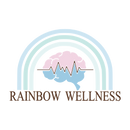❓ Frequently Asked Questions
1.🌿 What is Integrative Health?
Integrative health is a whole-person approach to wellness that combines nutrition, lifestyle, stress management, functional lab testing, and brain-based therapies. Instead of just looking at symptoms, integrative health focuses on finding root causes and empowering you with tools for balance and resilience.
2.💳 Do you accept insurance?
No. Rainbow Wellness does not accept insurance at this time. All services are provided on a self-pay basis. We are happy to provide receipts that you may submit to your insurance company, but reimbursement is not guaranteed.
3.🧪 Why are functional lab tests not covered by insurance?
Functional labs are designed for wellness and educational purposes, not for medical diagnosis or treatment. Because of this, they are generally considered “out of network” and not reimbursed by insurance companies.
4.🌈 What can I expect if I decide to work with you?
You’ll begin with a personalized consultation where we discuss your goals, challenges, and history. From there, we create a step-by-step plan that may include functional lab testing, neurofeedback, mild HBOT, or HRV training. Sessions are designed to be educational, supportive, and family-friendly.
5.📍 Where do we meet for appointments?
Appointments are offered in person at Rainbow Wellness in Oregon or virtually online for coaching, lab reviews, and education. Neurofeedback can also be supported with at-home programs.
6.👨👩👧 Who is this service for?
Rainbow Wellness services are for families and individuals seeking natural, educational, and holistic tools to support focus, mood, sleep, resilience, and overall wellness.
7.📦 Do at-home lab tests expire?
Yes. Most functional lab kits come with an expiration date (usually 6–12 months). We recommend completing and mailing your kit as soon as possible after you receive it.
8.📑 How will I receive my results?
Your lab results will be sent securely from the partner laboratory. We then review them together in a results and education session, where I’ll explain the findings in plain language and connect them to your goals.
9.🧠 What is neurofeedback therapy?
Neurofeedback is a non-invasive, medication-free training method that helps your brain learn to regulate itself more effectively. Sensors measure brainwave activity, and you receive real-time feedback through movies, games, or sounds. Over time, your brain learns healthier patterns.
10.🎯 How does neurofeedback therapy help behavioral change?
When the brain practices more balanced rhythms, people often notice changes in focus, sleep, stress tolerance, mood, and self-regulation. These brain-based shifts can lead to positive behavioral and emotional changes in daily life.
11.⚠️ Are there any negative side effects to neurofeedback therapy?
Neurofeedback is considered very safe. Occasionally, people may feel tired, mildly restless, or have vivid dreams after a session as the brain adjusts. These effects are temporary and typically resolve quickly.
12.🔒 Are the results of neurofeedback therapy permanent?
Neurofeedback works through neuroplasticity, the brain’s ability to form new patterns. With enough sessions and consistency, changes often last long term. Like physical fitness, occasional “tune-up” sessions may be helpful.
13.🏡 Is neurofeedback at home effective?
Yes! With professional setup and ongoing support, at-home neurofeedback can be an effective and convenient way to train your brain. Rainbow Wellness provides guided programs with the same technology used in office settings.
14.💰 What is the investment for an at-home neurofeedback program?
Pricing varies depending on the program length and equipment. Please contact us for current package details. All programs include training, coaching, and support.
15.🧩 What conditions can at-home neurofeedback training treat?
Neurofeedback at Rainbow Wellness is offered for wellness and educational purposes only. While research shows benefits for focus, stress, sleep, mood, and self-regulation, we do not claim to treat or diagnose medical conditions.
16.⏸️ What happens if I end an at-home neurofeedback program prematurely?
You may stop your program at any time. Results are best with consistency, but you will still keep the skills and progress you’ve built.
17.🔄 Can I complete EMDR, TMS, or another therapy while doing neurofeedback?
Yes. Many clients use neurofeedback alongside therapies like EMDR, TMS, counseling, or coaching. Always let each provider know what you are doing so your care can be coordinated.
18.📅 How many sessions of neurofeedback do I need?
Every brain is unique! Most people begin noticing changes within 10–20 sessions, but lasting results usually require 30–40 sessions. At-home programs are often designed for 2–3 sessions per week.
19.🔬 What is the difference between biofeedback and neurofeedback therapy?
-
Biofeedback trains awareness of body functions (like heart rate, breathing, muscle tension).
-
Neurofeedback focuses specifically on brainwave activity.
Both teach self-regulation, we often combine them for best results.
20.📆 How many times a week should I do neurofeedback therapy?
Most clients benefit from 2–3 sessions per week. This allows the brain to learn steadily without overwhelming it.
21.✅ Is neurofeedback therapy FDA-approved?
In-person neurofeedback and at-home neurofeedback therapy is FDA-approved as safe and effective forms of treatment for mental health symptoms, especially when combined with other modalities such as counseling. Neurofeedback in general is considered a safe, non-invasive wellness tool, but it is not approved as a medical treatment for specific conditions.
22.👦👩 Does neurofeedback therapy help kids and adults with ADD/ADHD?
Research suggests that neurofeedback may improve attention, focus, and self-regulation in kids and adults with ADD/ADHD. At Rainbow Wellness, we offer neurofeedback for wellness and educational support, not as a medical treatment.
23.💔 Can neurofeedback therapy help trauma?
Neurofeedback can help the brain feel safer, calmer, and less reactive. This often supports trauma recovery alongside counseling or therapy.
24.💓 What is Heart Rate Variability (HRV)?
HRV measures the tiny changes in time between each heartbeat. A higher HRV reflects better adaptability and resilience. HRV training helps you learn how to guide your nervous system into a calmer, more balanced state through breath and coherence practices.

